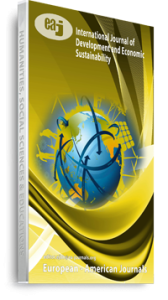While most advanced economies are in the process of industrializing their economies, plots by successive governments to transform the economy Nigerian, from a commodity-driven to an industrialized one, has not yielded much fruits despite several industrial policies and reforms. Based on the United Nations/World Bank success yardsticks with theoretical framework rooted on the Prebisch-Singer Hypothesis and the endogenous growth model, this study utilized K-class estimation procedure on Nigeria’s time series between 1990 and 2016. The result obtained indicates that infrastructural development, institutional framework, bank credit,foreign direct investment, electricity, stable exchange rate, low inflation and economic diversification are key drivers of industrialization. The findings also confirm that except the Nigerian economy achieves improved infrastructure delivery and institutional framework as well as stable domestic and currency prices, the efforts towards economic diversification agenda may be counterproductive. It is therefore expedient that Nigeria focuses on building strong macroeconomic fundamental that would accentuate its take-off to industrialization.
Keywords: Diversification, Gross Domestic Product, Industrialization, Macroeconomy, Manufacturing, Nigeria

